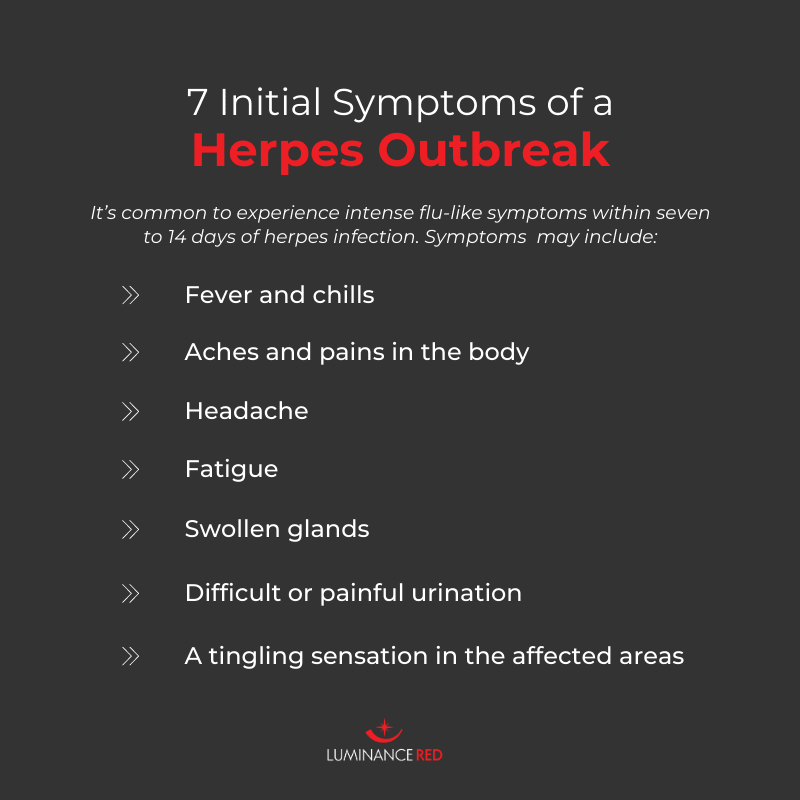Asymptomatic Shedding is Real. Here’s What You Need to Know

You definitely can’t ignore a herpes outbreak when it causes painful, angry sores and blisters to emerge on your body. But does the virus still cause trouble when its symptoms disappear?
It turns out that it's possible to experience a herpes outbreak—and transmit it to others!—without any visible symptoms. This phenomenon is known as asymptomatic shedding. It’s just one more reason to take precautions and understand how the herpes virus spreads.
What Is Asymptomatic Shedding?
Asymptomatic shedding occurs when the herpes virus is present on the skin but no visible symptoms develop. The virus “sheds'' from the skin and can be spread to others. This is different from symptomatic shedding, which occurs when someone infected with the herpes simplex virus (HSV) experiences genital sores, blisters, or other obvious symptoms during a herpes outbreak.
The herpes virus is contagious in both situations, but it’s virtually undetectable during asymptomatic shedding.
What Is Herpes?
Herpes, or herpes simplex, is a common virus that causes cold sores and genital herpes.
The herpes simplex virus type 1 (HSV-1) is best known for causing oral cold sores, but it’s also responsible for genital herpes in about 42% of women with the virus. Experts estimate that about 66% of the world’s population below the age of 50 has HSV-1.
Genital herpes, also known as HSV-2, is less prevalent than HSV-1, but still affects at least 417 million people. HSV-2 is considered a sexually transmitted infection (STI) since it’s mainly spread through close sexual contact.
If an infected person becomes symptomatic, the first outbreak is usually the most severe. It’s common to experience intense flu-like symptoms within 7 to 14 days of herpes infection. Symptoms of an initial outbreak last two to four weeks and may include:
- Fever and chills
- Aches and pains in the body
- Headache
- Fatigue
- Swollen glands
- Difficult or painful urination
- A tingling sensation in the affected areas
Fortunately, herpes outbreaks typically become shorter and less painful over time. Genital herpes causes blisters and lesions around the genital area, while cold sores erupt on or around the mouth.
There’s no cure for herpes, but many medications and products make it possible to relieve symptoms and minimize future outbreaks.

How Common is Herpes Without Symptoms?
Though herpes is usually defined by its unpleasant and embarrassing symptoms, herpes without symptoms is surprisingly common. It’s believed that as many as 90 percent of people infected with herpes are unaware they have the virus because they’ve never experienced an outbreak.
Other people know they are infected with herpes, but rarely show symptoms or endure outbreaks that trigger visible signs of the virus. They may mistakenly think the virus isn’t contagious during asymptomatic periods.
Yet, even people without symptoms can still spread herpes to others. The spread of infection still occurs during asymptomatic shedding, which is exactly why asymptomatic herpes may be even more contagious than herpes infections that cause defined outbreaks.
Asymptomatic Herpes May Be More Contagious
According to research, at least 70% of people experience asymptomatic shedding of HSV-1 at least once a month. Many may even shed the herpes virus without symptoms more than six times per month.
As technology has advanced to help us better understand the behavior of the herpes simplex virus, experts have emphasized that asymptomatic shedding occurs with much greater frequency than previously believed. Females with HSV-2, for example, shed an average of 28% of days.
Data from many different studies indicate that the majority of herpes transmission events are not linked to contact or sexual activity during a known herpes outbreak. Instead, partners commonly spread infection as the result of unrealized asymptomatic shedding.
How Do You Know If You Have Asymptomatic Herpes?
Asymptomatic herpes is difficult to identify because it doesn’t present any clear signs. The only way to confirm an asymptomatic herpes infection is to be tested.
At-home herpes kits are available if you want answers without a doctor’s appointment. These kits provide a small needle and ask you to prick your fingers, collect your blood sample into a tube, and shop it back in the envelope provided. You can expect to receive the results of at-home test kits within five days through a secured portal.
However, at-home testing can’t offer the reliability and precision of an immunoglobulin G (IgG) blood test performed by a medical professional. An IgG blood test works by detecting any signs of herpes antibodies produced by your body in response to the herpes infection.
If you do test positive for asymptomatic herpes, consider using prescription antiviral medication such as acyclovir, famciclovir, or valacyclovir. These medications block the herpes virus from multiplying, which significantly reduces the frequency of outbreaks and asymptomatic shedding. In fact, research suggests that antiviral therapy reduces shedding rates in women by an average of 80%!
It’s also helpful to supplement antiviral treatment with the use of a device like the Luminance RED Genital Treatment Device or Luminance RED Lip Treatment Device. The Luminance RED is FDA-registered to deliver concentrated wavelengths of medically optimized light directly onto herpes sores or areas where sores often develop. This type of high-powered light treatment is proven to alleviate pain, manage outbreaks, and even prevent future outbreaks from occurring.















